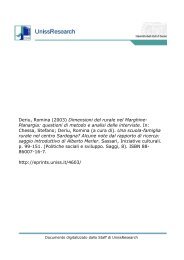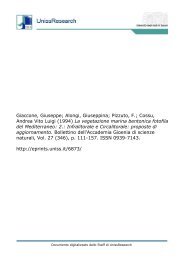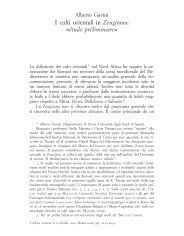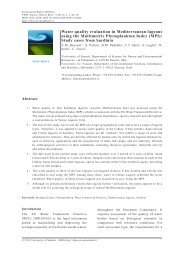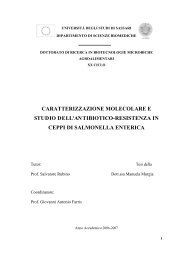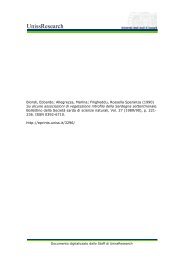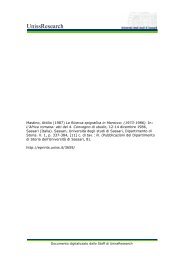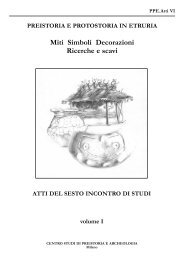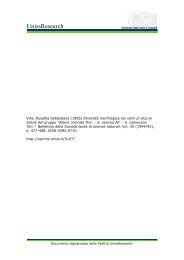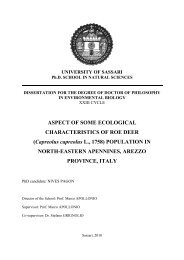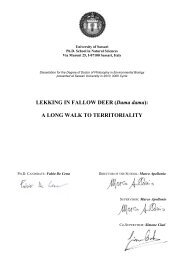Prospecting for safe (low fluoride) - Hydrology and Earth System ...
Prospecting for safe (low fluoride) - Hydrology and Earth System ...
Prospecting for safe (low fluoride) - Hydrology and Earth System ...
You also want an ePaper? Increase the reach of your titles
YUMPU automatically turns print PDFs into web optimized ePapers that Google loves.
1082 G. Ghiglieri et al.: <strong>Prospecting</strong> <strong>for</strong> <strong>safe</strong> groundwater in the Eastern African Rift<br />
Fig. 1. Geographical map of the study area.<br />
Since excessive consumption of <strong>fluoride</strong> can result in dental<br />
or skeletal fluorosis (Moller et al., 1970; Tekle-Haimanot<br />
et al., 2006), the consumption of <strong>fluoride</strong>-contaminated water<br />
in the Rift Valley has made these conditions commonplace<br />
throughout Ethiopia (Lester, 1974; Tekle Haimanot et<br />
al., 1987; Kloos <strong>and</strong> Tekle-Haimanot, 1999), Sudan (Smith<br />
et al., 1953) <strong>and</strong> Tanzania (Kilham <strong>and</strong> Hecky, 1973). Particularly<br />
high <strong>fluoride</strong> levels are found in the waters of Elementaita<br />
(1640 mg/l) <strong>and</strong> Nakuru (2800 mg/l) lakes in Kenya<br />
(Tekle-Haimanot et al., 2006). The World Health Organization<br />
suggested in 2006 an acceptable limit of 1.5 mg/l <strong>fluoride</strong>,<br />
but the Tanzanian government has been <strong>for</strong>ced by an<br />
over-riding need to prevent water shortage, to raise this limit<br />
to 8 mg/l. The urgent need to discover alternative sources of<br />
<strong>safe</strong> groundwater has prompted the present multidisciplinary<br />
study of a typical rural area located within a semi-arid microenvironment<br />
dominated by alkaline volcanic rocks. The aims<br />
of the study were to identify the main local source of <strong>fluoride</strong>,<br />
to locate aquifers unaffected by <strong>fluoride</strong> infiltration/release,<br />
<strong>and</strong> to develop strategies to exploit <strong>safe</strong> groundwater.<br />
2 Study area<br />
2.1 Location, climatic <strong>and</strong> physiographic setting<br />
The project was sited in the 2966 km 2 Arumeru district,<br />
Arusha region, northern Tanzania, lying to the west of<br />
Mt. Kilimanjaro, to the north of Mt. Meru, to the east of<br />
the Arusha to Nairobi (Kenya) road, <strong>and</strong> to the south of<br />
the Kenyan Amboseli National Park (Fig. 1). The district<br />
is administratively divided into six divisions, 37 wards <strong>and</strong><br />
133 villages. The 440 km 2 project working area lies in the<br />
northern part of the district, around 50 km from Arusha, is<br />
bounded by Mt. Meru (4565 m a.s.l.) <strong>and</strong> the Arusha National<br />
Park, <strong>and</strong> includes nine villages in the Oldonyo Sambu<br />
<strong>and</strong> Ngarenanyuki wards. Three main ethnic groups present<br />
are the Wameru (mainly farmers) <strong>and</strong> the Waarusha <strong>and</strong> Maasai<br />
(mainly pastoralists). Despite its proximity to the equator,<br />
the study area has an Afro-Alpine semi-arid climate,<br />
characterized by two distinct seasons. The main wet season<br />
lasts from June to September <strong>and</strong> contributes ∼70% of<br />
the annual rainfall, while the minor wet season lasts from<br />
mid February to mid May. The remaining months are effectively<br />
dry, although occasional showers do occur during this<br />
period. The mean annual minimum <strong>and</strong> maximum temperatures<br />
are 20.6 ◦ C <strong>and</strong> 28.5 ◦ C, respectively, <strong>and</strong> the mean<br />
annual rainfall is 535.3 mm (AA.VV., 2000; Gea, 2005). As<br />
illustrated in Fig. 1, the topography of the area is dominated<br />
by the volcanic cone of Mt. Meru <strong>and</strong> its slopes cover most<br />
of the area. The remaining l<strong>and</strong> is covered by alluvial fans<br />
fed from Mt. Meru. Recently active small volcanic cones are<br />
present in the north-western part of Mt. Meru, <strong>and</strong> a number<br />
of small maar-type flat craters are also present. The Big Momela<br />
<strong>and</strong> the Small Momela lakes, lying within Arusha National<br />
Park to the east of Mt. Meru, are saline <strong>and</strong> alkaline.<br />
The drainage pattern around Mt. Meru is radial, but further<br />
Hydrol. <strong>Earth</strong> Syst. Sci., 14, 1081–1091, 2010 www.hydrol-earth-syst-sci.net/14/1081/2010/



